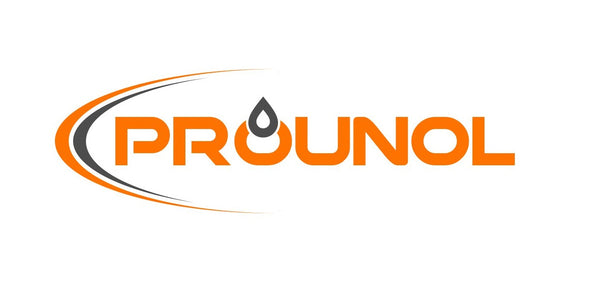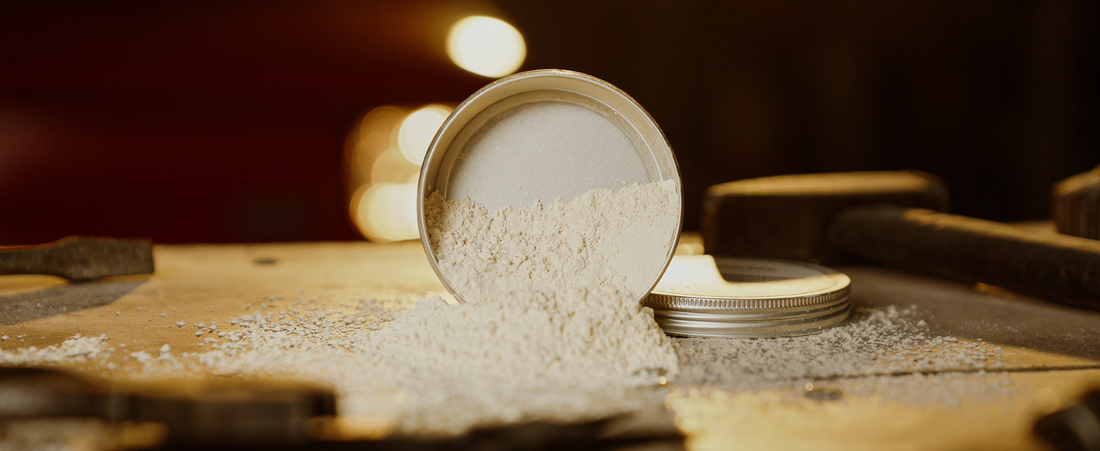Time to think again about glass polishing! Forget fiddly pastes and thickening 'ready-made' products – there's a whole new world out there just waiting to be explored. With cerium oxide powder, you can mix the slurry exactly when and in the amount you need for the job. The result? A fresh batch every time, consistent results, real convenience, and zero waste.
Cerium oxide has long been considered the gold standard in glass and ceramic polishing. Its effectiveness is based on chemistry and physics rather than marketing: when combined with water, ultrafine particles create a homogeneous suspension that can gently 'work' the microstructure of glass. Rather than aggressive abrasion, microscopic grinding and smoothing are achieved, resulting in clarity without optical distortion.
In practice, this means that minor scratches, hard water haze and milky spots can be significantly reduced or removed, and surfaces can regain an even shine. This is why detailers, window repair shops and DIY users restoring display cases, woodwork and watches use cerium oxide.
Powder instead of ready-made suspension: freshness and control
The main difference between powder and ready-to-use preparations is the moment you add water. When you keep powder in your cupboard, you have complete control over the consistency, portion size and preparation time. The result? The suspension is always fresh and predictable, and it won't separate unexpectedly after a few weeks of storage.
The second advantage is durability. Dry powder doesn't have a specific expiry date — just store it tightly and away from moisture. There's no time pressure, no need to worry about using it up 'because it's past its best', and no hassle with leftovers that gradually lose their perfect consistency once the bottle has been opened. You have a supply that works whenever you need it.
Finally, there's the issue of waste. Ready-made suspensions largely consist of water that has been measured, bottled and shipped for you. With powder, you primarily pay for the active ingredient and can decide how many servings you need. If you're polishing a small surface, you'll literally prepare a teaspoonful; if you're working on a larger surface, you'll make more. No waste.

Technical nuances that make a real difference
Polishing glass is an art of balance, requiring control over consistency, pressure, temperature and contact time. The cerium oxide slurry should maintain its slipperiness without running excessively. If the mixture is too thin, it can 'escape' the pads and spray everywhere, causing dispersion and reducing effectiveness. Conversely, a mixture that's too thick leaves streaks and dries faster, necessitating more frequent interruptions. This is why the ability to instantly adjust the density is so valuable — a few drops of water or a touch of powder and you're back within the ideal range.
Pressure should be constant but reasonable. Too much pressure can cause spot overheating and increase the risk of 'sludging' of the paste. It is better to apply the pad evenly in short passes to control micro-changes in gloss. High ambient temperatures accelerate drying, but a simple water sprayer can improve workflow and create a more consistent effect. The choice of media is also important: felt provides more pronounced results at the start, while microfibre helps to achieve a smoother finish.
Common Mistakes—and how to avoid them
Most problems are not caused by the 'magic' of the material itself, but by minor negligence. Firstly, cleanliness. Foreign particles under the pad will cause new scratches, so thoroughly washing and degreasing the surface is essential. Secondly, rushing. Attempting to 'catch up' with a suspension that is too thick results in streaks and uneven work. It's better to mix smaller batches more frequently than to force a larger batch in one go. Thirdly, failing to carry out a spot test. Each pane of glass is slightly different; a quick test on a small section allows you to select the right density and rhythm before moving on to the whole pane.
Finally, expectations: while cerium oxide is great for micro-scratches and haze, deep scratches that can be felt with a fingernail require preliminary polishing. Understanding this limitation can save you from disappointment and unnecessary hours of work.

Occupational health and safety
The good news is that working with cerium oxide doesn't have to be like working in a laboratory. A few sensible habits are enough to keep things clean, safe and predictable. Goggles protect your eyes from accidental splashes of the suspension; gloves make gripping easier and keep your hands clean; and working in a well-ventilated area or with a slightly open window prevents you from inhaling the spray. It's also a good idea to protect the surrounding area with tape and plastic wrap, particularly when polishing car windows, as this saves time cleaning the seals and mouldings afterwards. Any remaining paste should be diluted with water and disposed of according to local regulations; only liquid, well-diluted products should go down the drain, not thick 'cement'.
Summary: Visible control and freshness
Cerium oxide powder is a game-changer. You only mix when you're working and only mix as much as you need. The slurry is always fresh and the results are more consistent. You eliminate waste and avoid surprises with separation. Thanks to its virtually unlimited shelf life, the material is ready when you are. For anyone who wants a clean, predictable shine and true everyday comfort, this is simply the smart choice.

